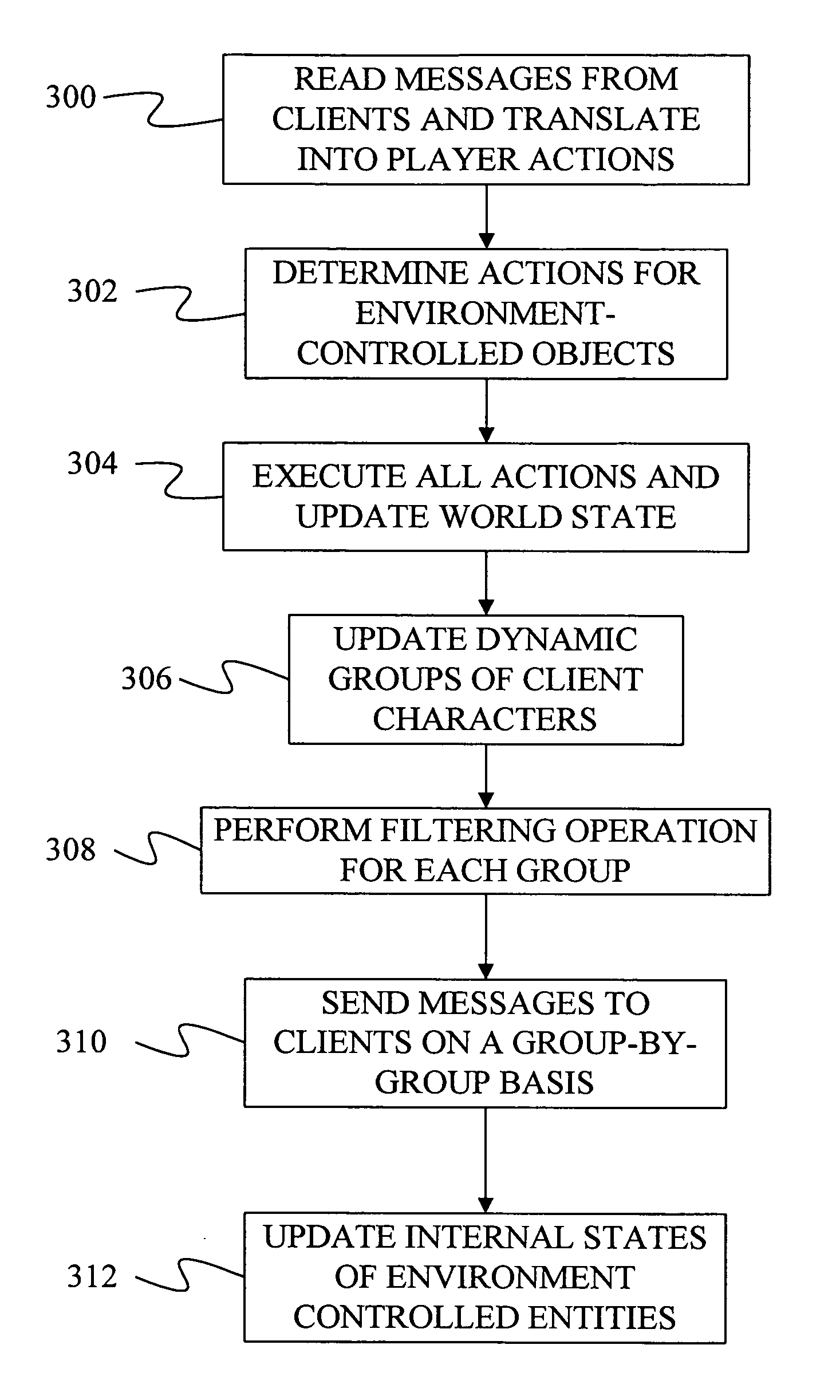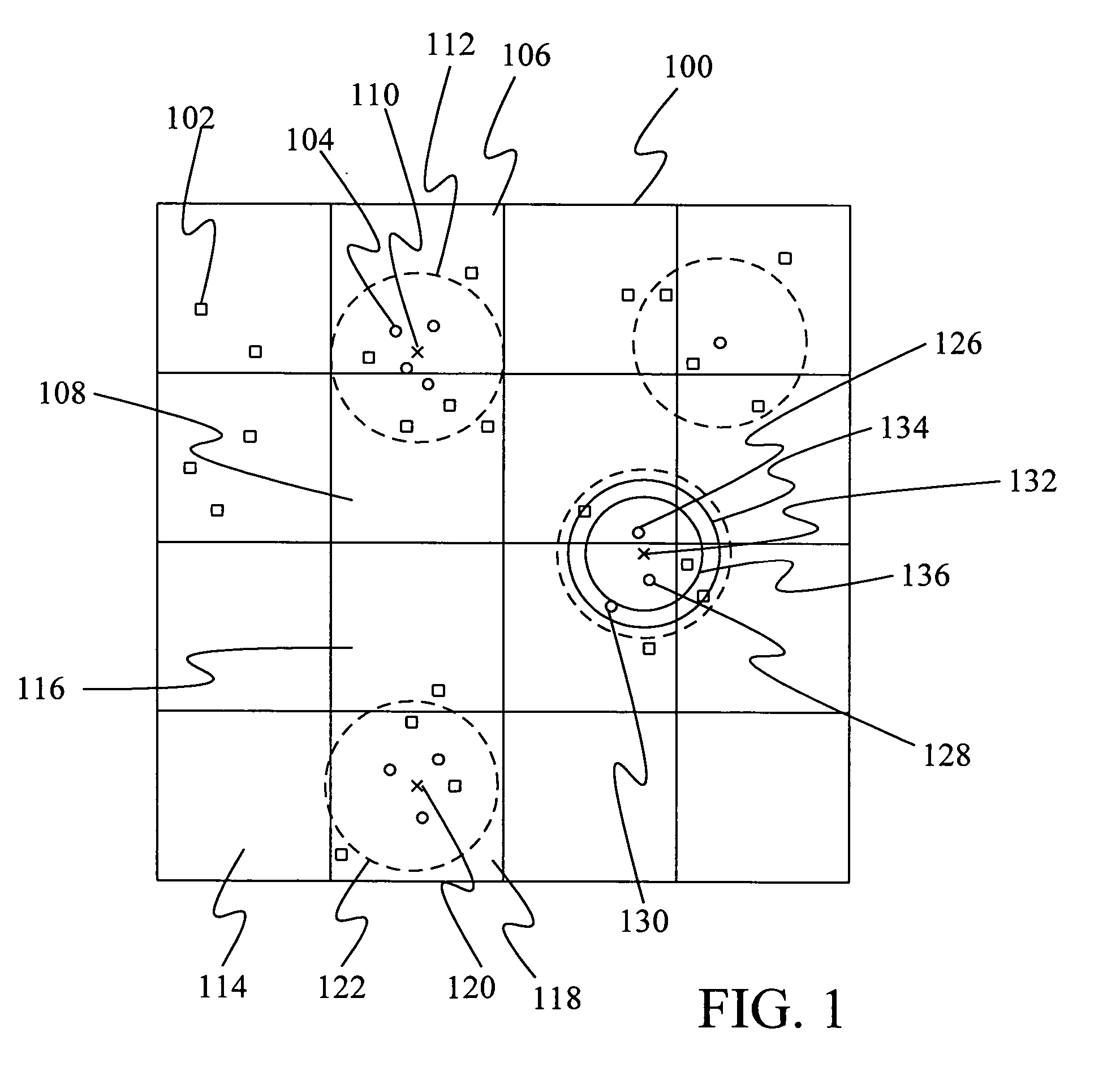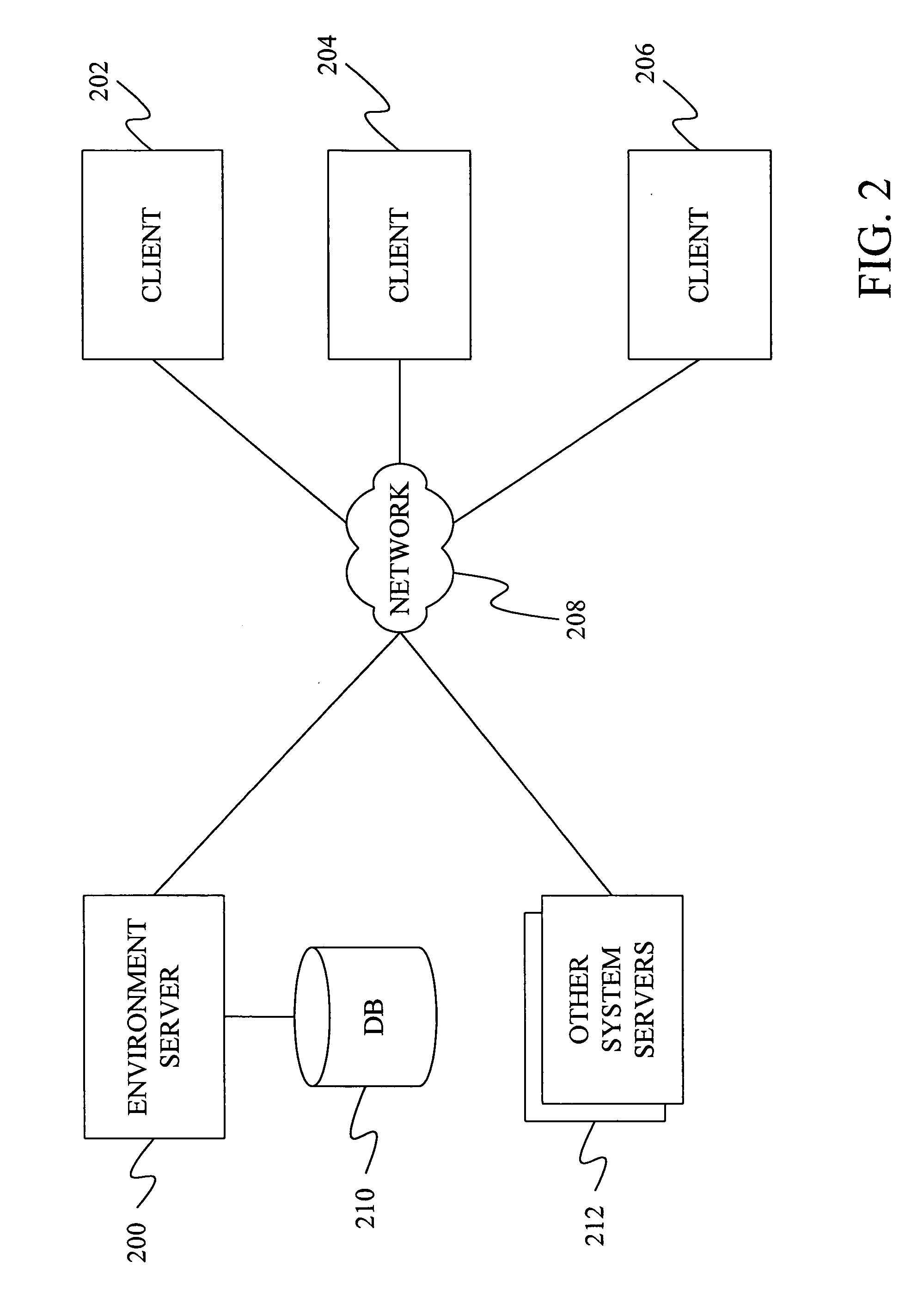Dynamic player groups for interest management in multi-character virtual environments
- Summary
- Abstract
- Description
- Claims
- Application Information
AI Technical Summary
Benefits of technology
Problems solved by technology
Method used
Image
Examples
Embodiment Construction
[0014] The present invention improves the efficiency of virtual world simulations in which multiple users or machines can control entities within the virtual environment. Such virtual environments are common in massive multi-player on-line games.
[0015] As shown in FIG. 1, the virtual environment typically consists of a map space 100 that is populated with system entities, such as system entity 102, which are shown as small squares in FIG. 1, and player entities (also referred to as characters), such as player entity 104, which are shown as small circles in FIG. 1. The system entities can include mobile entities such as monsters and system-controlled characters that can move within map space 100 as well as stationary entities such as buildings. The system entities are controlled by a central controller, typically a server, while the player entities are controlled by users or machines connected to the system, typically as clients of the server.
[0016] One architecture for simulating ...
PUM
 Login to View More
Login to View More Abstract
Description
Claims
Application Information
 Login to View More
Login to View More - R&D
- Intellectual Property
- Life Sciences
- Materials
- Tech Scout
- Unparalleled Data Quality
- Higher Quality Content
- 60% Fewer Hallucinations
Browse by: Latest US Patents, China's latest patents, Technical Efficacy Thesaurus, Application Domain, Technology Topic, Popular Technical Reports.
© 2025 PatSnap. All rights reserved.Legal|Privacy policy|Modern Slavery Act Transparency Statement|Sitemap|About US| Contact US: help@patsnap.com



